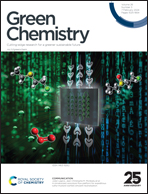Challenges and opportunities for the photo-(thermal) synthesis of ammonia
Abstract
For more than one century, the synthesis of ammonia (NH3) through the Haber–Bosch route has allowed the industrial-scale production of fertilizers and other nitrogen-containing compounds. Despite its success, the development of alternative NH3 synthesis methods with a lower CO2 footprint is highly desirable. In this context, the use of sunlight as source of energy to perform the photo-catalytic nitrogen (N2) reduction reaction represents a promising approach, although the reported efficiencies remain below those required to compete with the traditional HB route. To overcome these limitations, photo-thermal catalysis offers the opportunity to synergistically combine the effect of photo-induced charge carriers and localized heat to perform the synthesis of ammonia. In this review, we first provide an overview of the most recent advances in thermo- and photo-catalytic NH3 production. Next, we describe the merits of photo-thermal catalysis to enhance the catalytic activity towards NH3 synthesis. To conclude, we share our viewpoint on the future prospects and challenges ahead for photo-thermal catalysis to become a reality in the production of NH3 and other industrially relevant chemicals.

- This article is part of the themed collection: 2024 Green Chemistry Reviews


 Please wait while we load your content...
Please wait while we load your content...